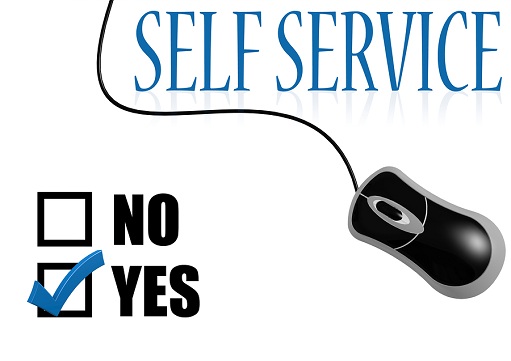
Usman Ghani (September 2, 2015)
Any purchase or action that requires a customer to serve themselves, without interactive assistance constitutes as self-servicing. A few textbook examples of self-service include kiosks such as ATMs for banks or gas stations where customers fill their own tanks and pay the cashier. With the increasing trend of self-reliance in customers, it has become necessary for businesses to create a solution for accommodating this demand. With the general customer behavior changing to a self-service approach, both B2B and B2C companies need to adapt to and leverage this new development to their benefit. The question business owners need to ask themselves is whether they have the capability to deliver automated customer service across different available channels or not.
A Forrester research substantiates that 72% of customers prefer self-service to resolve their issues over picking up the phone or sending an email; however, only 52.4% manage to find the relevant information. This is troubling since it indicates a failure to deliver the expected customer service experience.
Some might argue that investing in self-service solutions is simply a value-addition that would tie up resources of a business. Contrary to that, the importance of offering self-service solutions cannot be overemphasized, with the huge potential and competitive advantage it has to offer.
By empowering self-sufficient customers to help themselves, businesses can decrease their service cost per customer and utilize the previously tied up resources to deliver a richer customer experience. Furthermore, overall productivity of support team is also increased, thanks to self-service filtering out repetitive questions from reaching them.
Another benefit associated with offering self-service support is the empirical customer trend analysis that can prove invaluable for a business. By gathering information on the support topics being frequently used on the website, the content offered can be managed properly. Some websites also incorporate a rating system at the end of support articles asking for customer feedback. All support articles offered by Microsoft include this rating based review. This can help companies in improving the quality of the content offered. Furthermore, the data gathered from the support website can help determine customer profiles that can allow for target marketing to existing customers.
There are a number of ways businesses can accommodate its customer base with self-servicing needs. Providing an ample knowledgebase is vital. Help material offered should be extensive and diverse in order to cover a dynamic assortment of solutions, ranging from simplified to technical. Mentioned below are some practices already being implemented by successful businesses around the globe to enhance the experience for customers with a Do-It-Yourself mindset:
An article published in Harvard Business Review reveals a study which states that 62% of customers have to contact the company repeatedly to resolve an issue while 56% reported having to re-explain an issue. Most customers do not feel comfortable sharing the same information repeatedly or contacting the support staff more than once.
An online help center can be best defined as a forum catering to support needs of the self-servicing customers and provides them with the solutions they seek. Due to the increasing trend of online shopping for both products and services, companies are expected to provide online support content, integrated across various channels. When designing an online help center a business should offer a variety of solutions such as FAQs, Online Chat, Technical Manuals and Training tutorials. For general queries, a customer could be directed to FAQs that list solutions to problems, segregated in sections which have been resolved successfully in the past. The option of personal contact should also be offered since it can serve as a safety net, if the help material made available is insufficient to cater the customers’ needs. Furthermore, it could include hands-on training, via online chat or a remote session.
An Interactive Voice Response (IVR) system, although offering a limited range of support compared to its peers, can also serve as a preliminary option for self-service support. Businesses can set it up as a preliminary support system that offers solutions to routine queries. A good example will be a B2C customer helpline for a network carrier. When a customer calls in, he/she is provided with different options such as paying a bill, listening to and selecting from the various service packages and resetting account or a password through interactive menus. The automation provides ease of access and helps customers by offering solutions for a number of services and assists in quick resolution.
Failing to satisfy customers via seamless integration of services through a multi-support channel can adversely impact customer retention rate and is likely to impair brand value. To avoid that, it is wise for businesses to invest in a mobile application that enhances the customer service experience by extending the support to handheld devices. A perfect example for such solutions is the application in circulation by banks which allow the customers to transfer and track funds in addition to paying bills online just by logging into their accounts. Incorporating a self-support system in such applications can contribute towards enhancing customer experience by providing them access to self-help material such as technical manuals, training videos, FAQs and much more through an interactive application.

Healthcare workers are entrusted with the great responsibility of caring for people. In order to continually offer comfort and care to people, there are certain skills that healthcare professionals need to master. Of course there are the obvious ones related...
Read More
Creative thinking is one of the most important and sought after soft skills that you need to acquire in an increasingly digital landscape of 2021 and beyond. Creative thinking skills are required in many different job roles to come up...
Read More
Sales are the backbone of any business and great salespeople are an asset for the company. Some people are naturally gifted in the art of persuasive communication and negotiation skills required to convince clients and effectively sell more. However, certain...
Read More